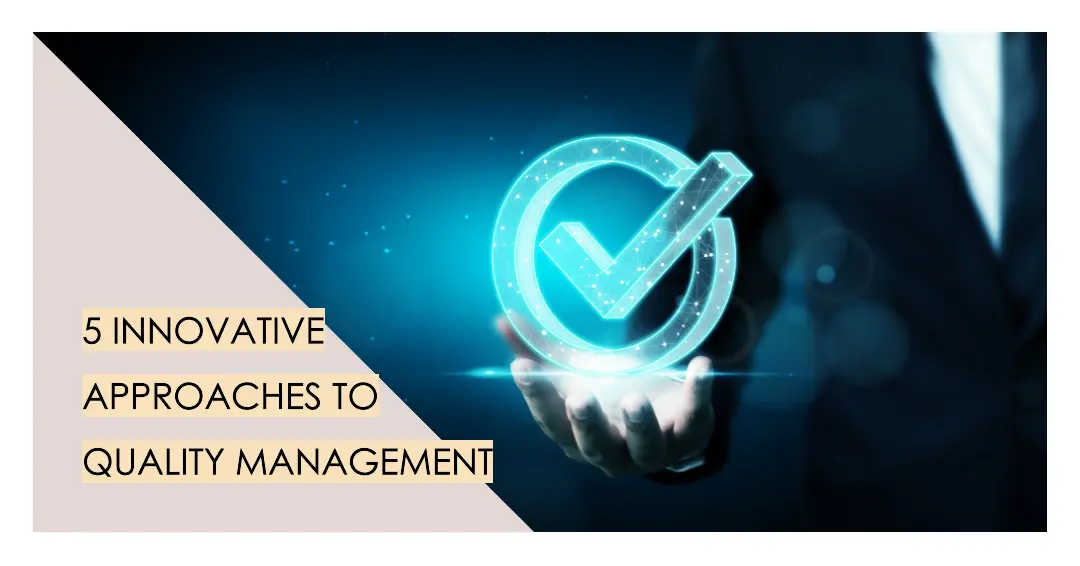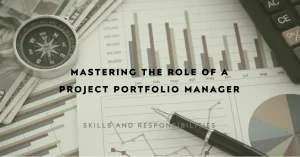To find out how Artificial Intelligence is changing the Project Management landscape, you may enjoy reading this article https://www.shaunstoltz.com/did-artificial-intelligence-just-change-everything-about-project-management/
I. Introduction
Hey there, fellow project enthusiasts! If you’re reading this, you probably know how vital quality management is to the success of any project. It’s the difference between delivering exceptional results that delight your clients and facing the dreaded consequences of subpar performance. But fear not, my friend! In today’s fast-paced, ever-evolving world, there are some fantastic approaches to help you ensure that your projects stay on the cutting edge of quality. In this blog post, we’ll explore five innovative methodologies that have revolutionized the way organizations manage quality in their projects.
Before we dive in, let me give you a quick overview of what we’re going to cover. We’ll start by discussing the tried-and-true Lean approach, which emphasizes efficiency and waste elimination to optimize project outcomes. Next, we’ll take a deep dive into the world of Six Sigma, a data-driven methodology that focuses on reducing variability and defects. From there, we’ll move on to Total Quality Management (TQM), a holistic approach that encompasses every aspect of a project to achieve superior results. After that, we’ll explore Agile Quality Management, a flexible and iterative approach perfect for fast-paced projects that need to adapt quickly. Finally, we’ll wrap things up with Design for Excellence (DFX), a design-focused methodology that puts the end-user at the heart of the project.
Are you as excited as I am? I hope so because, by the end of this blog post, you’ll have a solid understanding of these five innovative approaches and how they can help you elevate your projects to new heights. So, let’s get started and unlock the secrets to exceptional quality management!
II. Lean
Alright, let’s kick things off with our first innovative approach: Lean. If you’ve been in the project management game for a while, chances are you’ve heard of Lean. But if you haven’t, no worries! Lean is all about maximizing value for your customers while minimizing waste. Sounds great, right? Let’s dive deeper into what makes Lean such a powerful tool in your quality management arsenal.
A. Explanation of Lean principles
Lean is built on five core principles, which provide a solid foundation for improving your project’s efficiency and effectiveness. These principles are:
- Specify value: Define what’s truly valuable to your customer, and focus on that.
- Identify the value stream: Map out the entire process, from start to finish, to pinpoint any wasteful activities.
- Create flow: Streamline your processes by removing waste and ensuring smooth transitions between each step.
- Establish pull: Let customer demand drive your project’s output, rather than pushing products or services onto them.
- Pursue perfection: Continuously seek improvement in all aspects of your project.
By implementing these principles, you’ll be able to hone in on what truly matters in your project and eliminate anything that doesn’t contribute to your end goal.
B. Benefits of implementing Lean in projects
Now that we’ve got the principles down, let’s talk about the benefits of going Lean. By embracing this approach, you can expect to:
- Boost customer satisfaction by delivering exactly what they want, when they want it.
- Reduce costs by cutting out unnecessary steps and resources.
- Improve project speed by streamlining processes and reducing bottlenecks.
- Enhance collaboration by fostering a culture of continuous improvement and open communication.
- Increase flexibility by allowing your team to adapt quickly to changing customer needs and market conditions.
C. Case study: A successful Lean implementation in a project setting
Let’s bring Lean to life with a real-world example. Toyota, the global automotive giant, is famous for its Toyota Production System (TPS), which is essentially Lean in action. Through the TPS, Toyota managed to revolutionize the automotive industry by producing high-quality vehicles with shorter lead times and lower costs. They achieved this by focusing on continuous improvement, waste reduction, and a strong emphasis on customer value. The success of TPS has led many other organizations to adopt Lean principles, making it a tried-and-tested approach to quality management in projects.
So, there you have it – Lean in a nutshell! By incorporating Lean principles into your project, you can unlock a world of efficiency, cost savings, and most importantly, delighted customers. Next up, we’ll dive into the fascinating realm of Six Sigma. Stay tuned!
III. Six Sigma
With Lean under our belts, it’s time to explore our next innovative approach to quality management: Six Sigma. If you’re a fan of data-driven decision-making and process improvement, you’re going to love this one. So, grab your statistical hat, and let’s dive into the world of Six Sigma!
A. Explanation of Six Sigma methodology
Six Sigma is a methodology that aims to improve processes by identifying and eliminating the root causes of defects and reducing variability. It revolves around the idea that if you can measure how many defects are in a process, you can systematically determine how to eliminate them and achieve near-perfect results. Six Sigma leverages a plethora of statistical tools and techniques to analyze data and drive improvements.
At the core of Six Sigma lies the DMAIC framework, which stands for Define, Measure, Analyze, Improve, and Control. Here’s a quick breakdown of each step:
- Define: Clearly outline your project goals and customer requirements.
- Measure: Collect data to establish a baseline of your current process performance.
- Analyze: Identify the root causes of defects and sources of variability in your process.
- Improve: Develop and implement solutions to eliminate defects and reduce variability.
- Control: Monitor the improved process to ensure it remains stable and continues to deliver high-quality results.
B. Benefits of implementing Six Sigma in projects
Now that we’ve covered the basics, let’s discuss the fantastic benefits that Six Sigma can bring to your projects:
- Enhanced customer satisfaction by delivering products or services with fewer defects and higher quality.
- Cost savings through the reduction of waste, rework, and process inefficiencies.
- Improved process performance by pinpointing and addressing the root causes of problems.
- Increased efficiency by streamlining processes and reducing variability.
- A data-driven culture that encourages evidence-based decision-making and continuous improvement.
C. Case study: A successful Six Sigma implementation in a project setting
To see Six Sigma in action, let’s take a look at a real-life success story. General Electric (GE), one of the world’s leading conglomerates, fully embraced Six Sigma in the 1990s under the leadership of then-CEO Jack Welch. GE implemented Six Sigma across its various divisions, from manufacturing to finance, and saved billions of dollars in the process. The company’s commitment to Six Sigma not only led to significant cost savings but also improved product quality, customer satisfaction, and overall business performance.
The bottom line? Six Sigma is a powerful, data-driven approach to quality management that can help your projects reach new heights of excellence. Next on our list, we’ll explore the holistic world of Total Quality Management. Get ready for an all-encompassing ride!
IV. Total Quality Management (TQM)
We’ve tackled Lean, Six Sigma, and Agile Quality Management so far, but now it’s time to explore a comprehensive approach that leaves no stone unturned: Total Quality Management (TQM). TQM is all about creating a culture of quality that permeates every aspect of your organization, from top management to frontline employees. Are you ready to immerse yourself in the world of TQM? Let’s dive in!
A. Explanation of TQM principles
Total Quality Management is a holistic approach that emphasizes continuous improvement and customer satisfaction as the ultimate goals. It requires the commitment of the entire organization to achieve and maintain high-quality standards. Some key principles of TQM include:
- Customer focus: Make customer satisfaction your top priority by understanding and addressing their needs and expectations.
- Leadership commitment: Ensure that top management is actively involved in promoting and supporting quality initiatives.
- Employee involvement: Empower employees at all levels to take ownership of quality and participate in continuous improvement efforts.
- Process approach: Identify, analyze, and improve core processes to achieve better quality and performance.
- Continuous improvement: Strive for ongoing improvements in all aspects of your organization, using tools like Plan-Do-Check-Act (PDCA) cycles and benchmarking.
- Fact-based decision making: Use data and information to drive decisions and measure the effectiveness of your quality initiatives.
B. Benefits of implementing TQM in projects
By embracing TQM in your projects, you can unlock a range of benefits, including:
- Enhanced customer satisfaction through a relentless focus on their needs and expectations.
- Improved product or service quality by addressing issues at the source and fostering a culture of continuous improvement.
- Increased efficiency and reduced waste by optimizing processes and eliminating non-value-added activities.
- Higher employee engagement and morale, as everyone takes ownership of quality and contributes to the improvement efforts.
- A competitive advantage, as your organization becomes known for its commitment to quality and customer satisfaction.
C. Case study: A successful TQM implementation in a project setting
To bring TQM to life, let’s take a look at a real-world success story. Motorola, a global leader in telecommunications and electronics, implemented TQM in the 1980s to address quality issues and improve customer satisfaction. Through their commitment to TQM principles, Motorola managed to significantly reduce defects, streamline processes, and drive innovation. In fact, their dedication to quality improvement was a key factor in the development of Six Sigma, which we discussed earlier in this blog post.
By embracing TQM, Motorola was able to transform its business and build a reputation for delivering high-quality products and services. Their story is a testament to the power of Total Quality Management and its potential to drive positive change in any organization.
So, there you have it – Total Quality Management in all its holistic glory! By adopting a TQM mindset and involving every member of your organization in the quest for quality, you can elevate your projects and achieve exceptional results. Next up, we’ll explore the design-centric world of Design for Excellence. Stay tuned!
V. Agile Quality Management
We’ve covered Lean and Six Sigma, but what if I told you there’s an approach that’s perfect for the ever-changing, fast-paced projects of today’s world? Meet Agile Quality Management, an adaptive and iterative approach that ensures quality is not just an afterthought, but an integral part of your project from day one. Let’s dive in and find out how Agile can help you deliver exceptional results in record time.
A. Explanation of Agile Quality Management principles
Agile Quality Management is a set of practices that focus on continuously improving and adapting processes throughout the project lifecycle. It is based on the Agile Manifesto, which prioritizes individuals and interactions, working solutions, customer collaboration, and responding to change. Here are some key principles of Agile Quality Management:
- Early and continuous feedback: Encourage frequent communication between team members, stakeholders, and customers to identify potential issues and make improvements quickly.
- Iterative development: Break the project into small, manageable chunks (called sprints), allowing for rapid adjustments and refinements based on feedback and changing requirements.
- Cross-functional teams: Build teams with diverse skillsets to ensure that quality is considered from multiple perspectives throughout the project lifecycle.
- Test-driven development: Write tests before developing the actual product or feature, ensuring that quality requirements are met from the outset.
- Continuous improvement: Use retrospectives and other feedback mechanisms to identify areas for improvement and implement changes in real-time.
B. Benefits of implementing Agile Quality Management in projects
Agile Quality Management offers a host of benefits for those willing to embrace its flexible and adaptive nature. Some of these benefits include:
- Faster time to market, thanks to iterative development and quick adaptation to change.
- Enhanced customer satisfaction through continuous collaboration and rapid response to feedback.
- Improved product quality by incorporating quality checks throughout the project lifecycle, rather than only at the end.
- Greater flexibility to adapt to new requirements or changes in the project scope.
- Higher team morale and collaboration, fostered by a culture of trust, open communication, and shared responsibility for quality.
C. Case study: A successful Agile Quality Management implementation in a project setting
To illustrate the power of Agile Quality Management, let’s take a look at Spotify, the popular music streaming service. Spotify has long been a proponent of Agile methodologies, using a combination of Scrum and other Agile practices to deliver a high-quality user experience. By organizing their teams into cross-functional “squads” that focus on specific aspects of the product, Spotify can quickly respond to user feedback and evolving market demands. This flexible, quality-focused approach has been a key factor in Spotify’s ability to stay ahead of its competitors and maintain its position as an industry leader.
So, there you have it – Agile Quality Management in all its glory! If your projects demand rapid adaptation and continuous improvement, this approach might be just what you need. Next up, we’ll explore the design-centric world of Design for Excellence. Stay tuned!
VI. Design for Excellence (DFX)
We’ve delved into Lean, Six Sigma, and Agile Quality Management, but now it’s time to explore an approach that puts design at the heart of quality management: Design for Excellence (DFX). This methodology focuses on creating optimal designs from the get-go, ensuring that your products or services are built for success right from the start. So, let’s put on our creative hats and dive into the world of DFX!
A. Explanation of DFX principles
Design for Excellence is all about considering every aspect of your product or service during the design phase to ensure it meets quality requirements and delivers a delightful user experience. DFX encompasses various sub-methodologies, such as Design for Manufacturability, Design for Assembly, and Design for Sustainability, among others. While these sub-methodologies may focus on different aspects of design, they all share a common goal: optimizing the design to achieve the best possible outcome. Here are some key principles of DFX:
- Holistic design approach: Consider all aspects of your product or service, from functionality to aesthetics, to create a comprehensive and well-thought-out design.
- Early stakeholder involvement: Engage stakeholders, including customers, suppliers, and team members, early in the design process to gather valuable input and insights.
- Design optimization: Use tools and techniques to optimize your design, such as simulations, prototyping, and failure mode and effects analysis (FMEA).
- Cross-functional collaboration: Encourage collaboration between different departments and disciplines to ensure a well-rounded and robust design.
- Lifecycle consideration: Evaluate the entire lifecycle of your product or service, from production to disposal, to minimize negative impacts on the environment and society.
B. Benefits of implementing DFX in projects
By embracing DFX, you can unlock a range of benefits for your projects, including:
- Improved product quality and performance by addressing potential issues during the design phase.
- Cost savings through optimized designs that minimize waste, rework, and production inefficiencies.
- Enhanced customer satisfaction by creating products or services that meet their needs and exceed their expectations.
- Increased innovation by encouraging creativity and collaboration across different disciplines.
- Reduced environmental impact by considering sustainability factors throughout the design process.
C. Case study: A successful DFX implementation in a project setting
To bring DFX to life, let’s look at a real-world example. Apple, the technology giant known for its sleek and innovative products, is a strong proponent of design-centric approaches like DFX. From the iPhone to the MacBook, Apple’s products are renowned for their aesthetic appeal, functionality, and user experience. By prioritizing design excellence in every aspect of their product development, Apple has managed to build a loyal customer base and maintain a leading position in the highly competitive tech industry.
And there you have it – Design for Excellence in all its creative glory! By putting design at the heart of your quality management efforts, you can create products and services that not only meet quality standards but also delight your customers. Now that we’ve covered all five innovative approaches, let’s wrap things up with some final thoughts.
VII. Conclusion
What an incredible journey we’ve had together! We’ve traversed the fascinating landscapes of five innovative approaches to quality management in projects, each with its unique strengths and applications. From the efficiency-driven world of Lean to the data-centric realm of Six Sigma, the adaptive universe of Agile Quality Management, the all-encompassing TQM, and the creative domain of Design for Excellence, we’ve covered a lot of ground.
Now, you might be wondering which approach is the best fit for your organization. The truth is, there’s no one-size-fits-all answer. Each organization is unique, and the most effective approach will depend on factors like your industry, company culture, project requirements, and resources. It’s essential to assess your organization’s specific needs and evaluate the potential benefits of each approach before making a decision.
But remember, quality management is not a one-and-done deal. It’s an ongoing commitment that requires continuous learning, improvement, and adaptation. By embracing a culture of quality and leveraging the innovative approaches we’ve discussed, you can drive excellence in your projects and deliver outstanding results for your customers.
So, what are you waiting for? It’s time to embark on your quality management adventure and elevate your projects to new heights. Good luck, and happy quality hunting!
Find out more about Shaun Stoltz https://www.shaunstoltz.com/about/
This post was written by an AI and reviewed/edited by a human.



